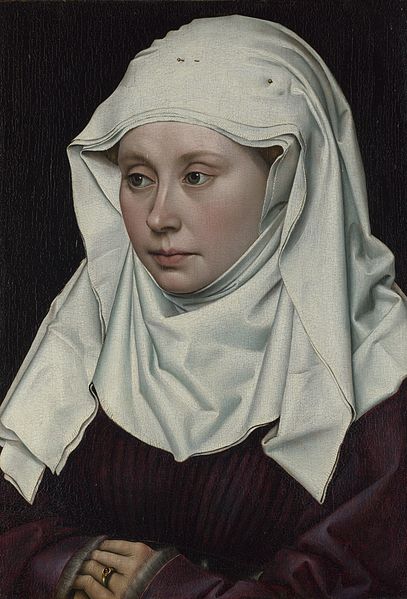Robert Campin, now usually identified with the Master of Flémalle, was a master painter who, along with Jan van Eyck, initiated the development of Early Netherlandish painting, a key development in the early Northern Renaissance.
Portrait of a Man, c. 1435. 40.7cm x 28.1cm. National Gallery
Portrait of a Woman, c. 1435. 40.6cm x 28.1cm. National Gallery
The Seilern Triptych, c. 1425. One of two of Campin's surviving triptychs. As an early work, it is highly innovative, especially in its application of oils, but less accomplished and successful (note the flat perspective) than his more mature panels.
The Mérode Altarpiece, attributed to the Master of Flémalle or workshop, c. 1425–1428.
Jan van Eyck was a Flemish painter active in Bruges who was one of the early innovators of what became known as Early Netherlandish painting, and one of the most significant representatives of Early Northern Renaissance art. According to Vasari and other art historians including Ernst Gombrich, he invented oil painting, though most now regard that claim as an oversimplification.
Portrait of a Man (Self Portrait?) by Jan van Eyck, 1433. National Gallery, London
The Arnolfini Portrait, oil on oak, 1434. National Gallery, London
Hubert and Jan van Eyck, Ghent Altarpiece, completed 1432. Saint Bavo Cathedral, Ghent
Portrait of Margaret van Eyck, Groeningemuseum, Bruges, 1439








